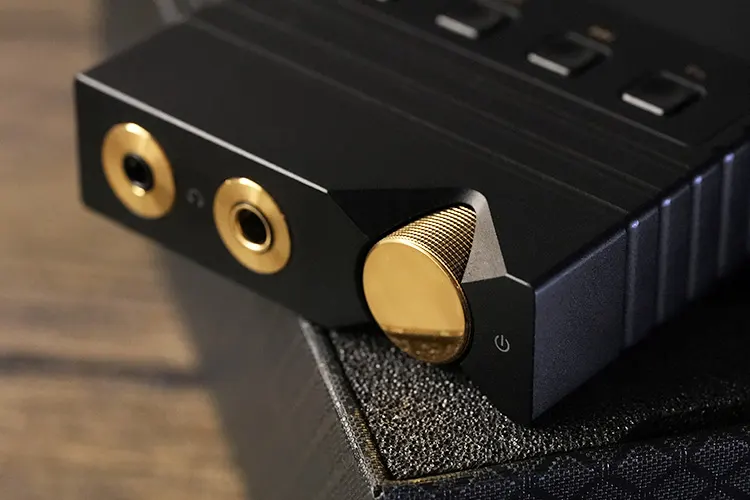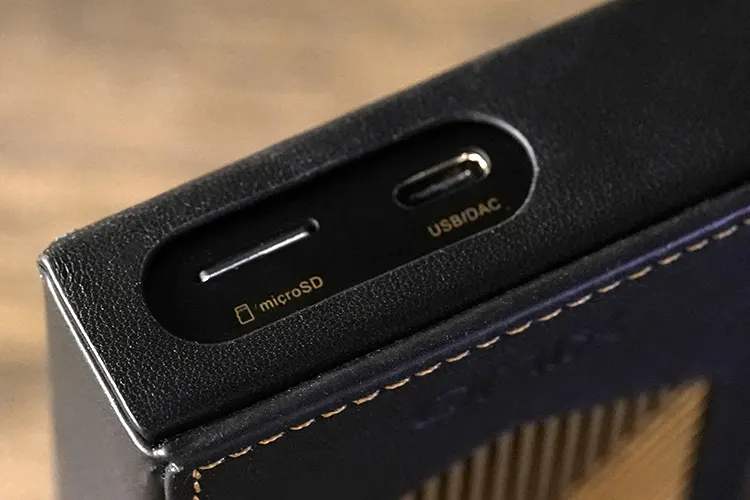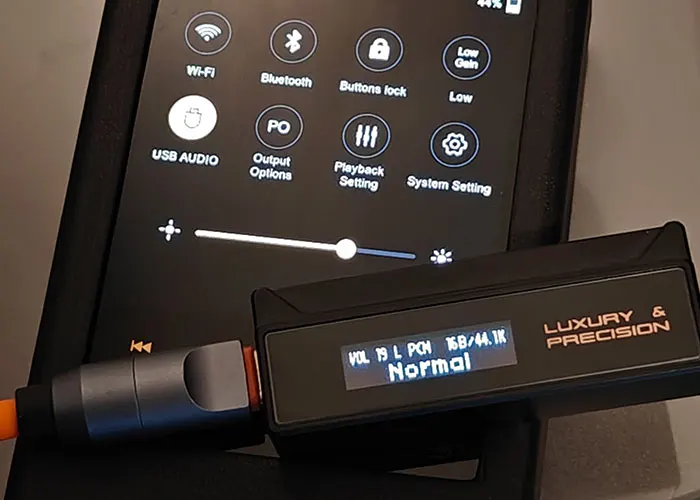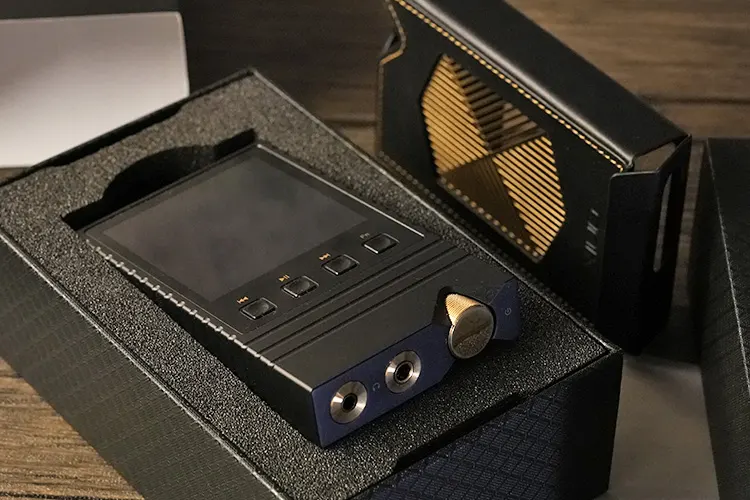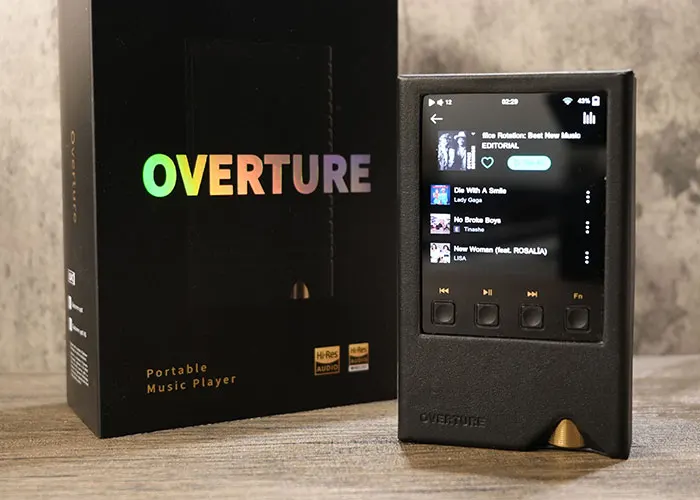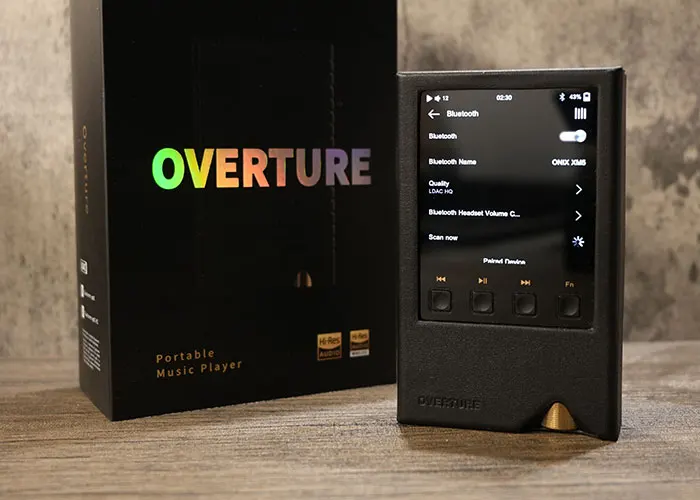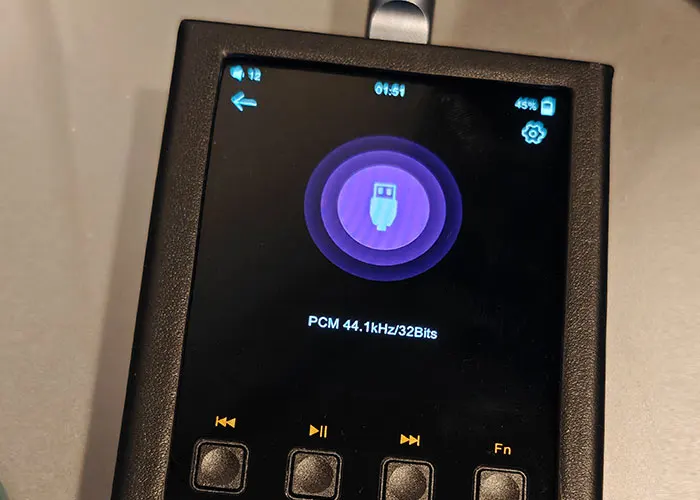Today, James reviews the ONIX Overture XM5, which is a new ES9039PRO-equipped and wireless-capable DAP with up to 1W of output power. It is priced at $739.
Disclaimer: This sample was sent to me in exchange for my honest opinion. Headfonics is an independent website with no affiliate links or status. I thank ONIX and Shanling for their support.
Click here to learn more about the ONIX products we previously discussed on Headfonics.
Note that this article follows our current scoring guidelines which you can read here.
The ONIX Overture XM5 is the first standalone DAP from ONIX, not counting the brand’s flagship docking player, the Miracle, which is based on the same decoding chipset.
If you haven’t heard of ONIX, they are a UK brand specializing in Hi-Fi products and didn’t join the portable niche until last year. Our first review from the brand was only very recently with their excellent Mystic XP1 portable amp and DAC.
The brand has a strong partnership with Shanling, though the XM5 player is very different from what Shanling offers with its customized OS, rigid CNC housing aesthetics, and tuning.
The Tidal-supported XM5 is positioned as a “Pure Music Player” under ONIX’s Horizon series and is priced at $739.
With plenty of features and a unique design, does it deserve more attention among the plethora of competing DAPs sub-$1k? I find out in my full review below.
Features
The ONIX Overture XM5 is a portable DAP equipped with an XMOS XU316 USB chipset along with an ESS ES9039PRO DAC and a 3rd generation set of FPGA-controlled KDS oscillators, enabling decoding up to DSD512 and PCM 32bit/768kHz.
The amplifying stage features dual TPA6120 op-amps, offering a good balance of coloration and power, with a solid 1070mW of balanced output power on a 32Ω load.
The XM5 runs on the Ingenic X2000 MCU, which is adequate for the rather lightweight OS, and supports Bluetooth 5.2 and Airplay over a WiFi connection.
With a 7000mAh battery inside, it provides 12 hours of playback on the balanced output and 14 hours on the SE output, which seems quite sufficient.
In practice, it still has more than 15% battery when I play a mix of different formats of test tracks for burn-in over 9 hours, which is quite decent.
Design
The design of all ONIX products is easily identifiable with the black ‘rugged’ theme, and the XM5 player aesthetics are no exception to this approach.
Crafted from a piece of aluminum with a smooth oxidized finish in black color, the XM5 has a stealthy yet modernistic look, with grooves on the sides that allow for a secure grip. Each button and socket is labeled in gold color adding a nice touch to the overall design.
On the front, you will find an unusual, square 3-inch, 720p OLED screen that is legible with a high pixel density. Below the screen are four physical control buttons, which include an Fn button that is customizable.
The rear panel has a large matte glass covering giving the impression of a portable amplifier or a Bluetooth receiver.
The overall build quality of the XM5 is excellent, everything is self-explanatory so you may not even need to consult the manual. The design also seems optimized for desktop use making it very practical for media management with one hand.
The device is still light and easy to use in the hand, although it might be slightly awkward to reach the volume button in the lower right-hand corner. You can try inverting the screen orientation so the volume button would be placed on the upper left side.
If you are purchasing the XM5, I would recommend getting the leather case, which offers great protection for the player and gives a much classier appearance.
I/O
The USB connector and card slot for the XM5 are located on the top of the player, while the volume, 3.5mm, and 4.4mm outputs are on the bottom side.
Unlike Shanling DAPs there are no dust covers on the card slot so you can instantly swap memory cards.
Again, the layout is perfect for desktop use especially when you use it as a decoder for your laptop or other USB source. The USB cable will be hanging on the upper side and you can swap different IEMs and change the volume easily without being blocked by the USB cable.
Controls
The layout of the physical control buttons is quite unusual as most manufacturers have transitioned to full-panel touch screens.
However, since there isn’t much graphical content on the XM5 screen. Since it is positioned as a pure music player, the 3-inch screen feels adequate for clarity and usability.
While the physical buttons may appear to be a somewhat outdated design, they are practical. The convenience of easily skipping to the next/last song with just one finger without having to activate the screen or reach out to the side of the player is excellent.
The gold-plated volume knob on the lower side of the player, similar to common portable amps, also allows for quick and easy volume adjustment when the player is placed on a desk.
Although the design may not follow conventional trends, you can remotely control it on the go using the Eddict Player app. For instance, you can place it in your backpack and control it from another Bluetooth-enabled device such as your smartphone while on the move.
Packaging & Accessories
The packaging for the Overture XM5 is clean and professional with Hi-Res Audio and Hi-Res Audio Wireless labels on top. Under the sleeve is a textured paper box, which houses the user manual, screen protectors, and a USB cable.
There is a screen protector pre-applied, so do not immediately apply the additional screen protector when unboxing the device, or else you will have 2 layers applied.
Software
The XM5 runs on a customed OS, likely Linux-based with features like a drag-down menu and multiple desktop pages to enhance user familiarity.
You can access Tidal from the front page, and Playback Settings is on the last page together with System Settings, which allows users to modify advanced settings such as Digital filters, turn on Gapless playback, etc.
There is also a shortcut from the drag-down menu and on the main page, the playback information is also displayed, with a click you will be redirected to the playback screen.
The playback screen is also very intuitive with a VU meter visualizer which is quite cool to look at. There are shortcuts everywhere and the overall user experience is satisfactory.
Navigation
The screen size isn’t that big though the XM5 operates like other DAPs as the width of the screen and icon sizes are quite similar.
Generally speaking, swiping action is smooth enough for everyday operations and even when playing back large files there is little delay when you jump to another point of the track. Despite this, Android phones are still considerably faster in response if you compare them side by side.
The customizable Fn button defaults to Home, which does help easier navigation as you don’t need to swipe a few times back to the home screen. The playback physical buttons are also helpful if you want to skip a track or two.
You can also set the Fn button as the Lock Screen button, so you don’t need to use the on/off button to wake the screen up.
Features
Streaming
Despite the non-Android platform you do get streaming on the XM5. The simplified version of Tidal is similar to other small DAPs and provides the basic functions, which are easy to use, especially for those who listen to Tidal on multiple platforms.
Aside from Airplay, the XM5 also supports DLNA playback from a home network. This allows you to access a large library from a NAS setup providing a handy way to enjoy your music without storing them directly onto the player.
Media Management
Probably due to the pure system design the system startup speed and indexing for songs is considerably fast. The XM5 has multiple desktop pages and most of the shortcuts are classifications of the music files, such as genres and artists, and tags are accurately read similar to Shanling DAPs.
Wireless Connectivity
The Overture XM5 supports Bluetooth 5.2 which is more power efficient, and it can be a receiver or a transmitter, beaming tracks to your car system or home system via Bluetooth connection which is very convenient.
The XM5 supports TIDAL, Airplay, DLNA, and Synclink remote control over WiFi. The stability and speed are comparable to other Shanling players.
I did not encounter any force-close situations or bugs during the few weeks I tested the XM5 on the latest firmware so I consider it quite stable. The WiFi strength has been tested against other players, and the results are satisfactory.
Wired Connectivity
The XM5 features an XMOS solution for low-latency signature transfer between a USB source and the player.
Connecting to my laptop and testing with streaming content, the latency between the audio and video content displayed is minimal, basically close to being lip-synced which makes it a satisfactory media experience.
The XM5 is quite versatile even when not running Android OS. Since it is OTG digital Audio you can connect it to dongles and other USB decoding devices.
This will be convenient for those who want to connect the XM5 with their decoders on the desktop/HiFi setup. However, I do not think there is a need to hook it up to dongles, which are unlikely to surpass its performance and power.
Sound Impressions
The XM5 has undergone over 100 hours of burn-in and has been tested with a range of earphones. This includes the Sennheiser HD800s, MOONDROP PARA, Truth Ear Zero Red version, Shanling MG800, and the KEFINE Delci. All sound impressions are based on the 1.4 version firmware.
Summary
The initial impression while listening to the XM5 is that it is a powerful device capable of easily driving IEMs and has the potential to power headphones that require a relatively high amount of power.
It emphasizes clarity and vocal fullness with a slightly V-shaped tuning, showcasing expressive yet controlled bass. Despite being an ESS-based design, it offers good warmth.
In many cases, more powerful devices can sound harsh or overly bright in the treble region, but this is not the case with the XM5.
It demonstrates decent control when listening with various earphones and headphones, providing a technically proficient impression without compromising on dynamics and musicality.
Timbre
The XM5 delivers firm bass and extended treble, courtesy of its powerful amplifying stages. This robustness enables demanding IEMs to deliver a solid bass response with sufficient control to prevent bleeding into the slightly forwarded vocal range.
There is also a good sense of resolution and control, outlining instruments clearly but without excessively boosting any particular frequencies.
Despite its high power in the output, the bass is warm and rich, providing punchy and airy characteristics.
Male vocalists and darker voices are presented with good authority and a thick, dense image that highlights chamber resonances and bass layering. Drums are intimately portrayed with good separation, particularly suited for bass-intensive genres like rock and J-pop.
Vocals are not pushed to sound excessively sharp for added crispness or to appear too forceful and prominent.
The slightly forwarded midrange benefits less expressive and uplifting voices, making them feel more defined and bringing the virtuoso to the forefront.
The treble possesses sufficient energy to balance the power in the low end. It is finely polished to eliminate harshness and sharpness and imbue higher strings/notes with a sweeter tone.
The higher vocal frequencies sit slightly above the bass in terms of intensity, ensuring that nuances are conveyed clearly without being overshadowed. Hi-hats and sharper notes are precise and controlled, maintaining sufficient presence and balance without becoming overly brittle.
Staging & Dynamics
The high power of the XM5 gives it a significant advantage in delivering good depth and dynamics, with the sub-bass being distinctly detectable, providing a solid foundation for an immersive and deep soundstage.
The suppression of sharpness ensures that tracks with high dynamics do not sound lean or flattened. However, some users may prefer a slightly brighter tuning beyond 7kHz for more airiness.
The upper mids exhibit sufficient energy to position vocals distinctly and capture transients effectively.
The tuning outlines vocals with clarity and satisfactory resolution; even in complex compositions like orchestras with sopranos, there is ample definition power, and separation.
Click on page 2 below for my recommended pairings and selected comparisons.




